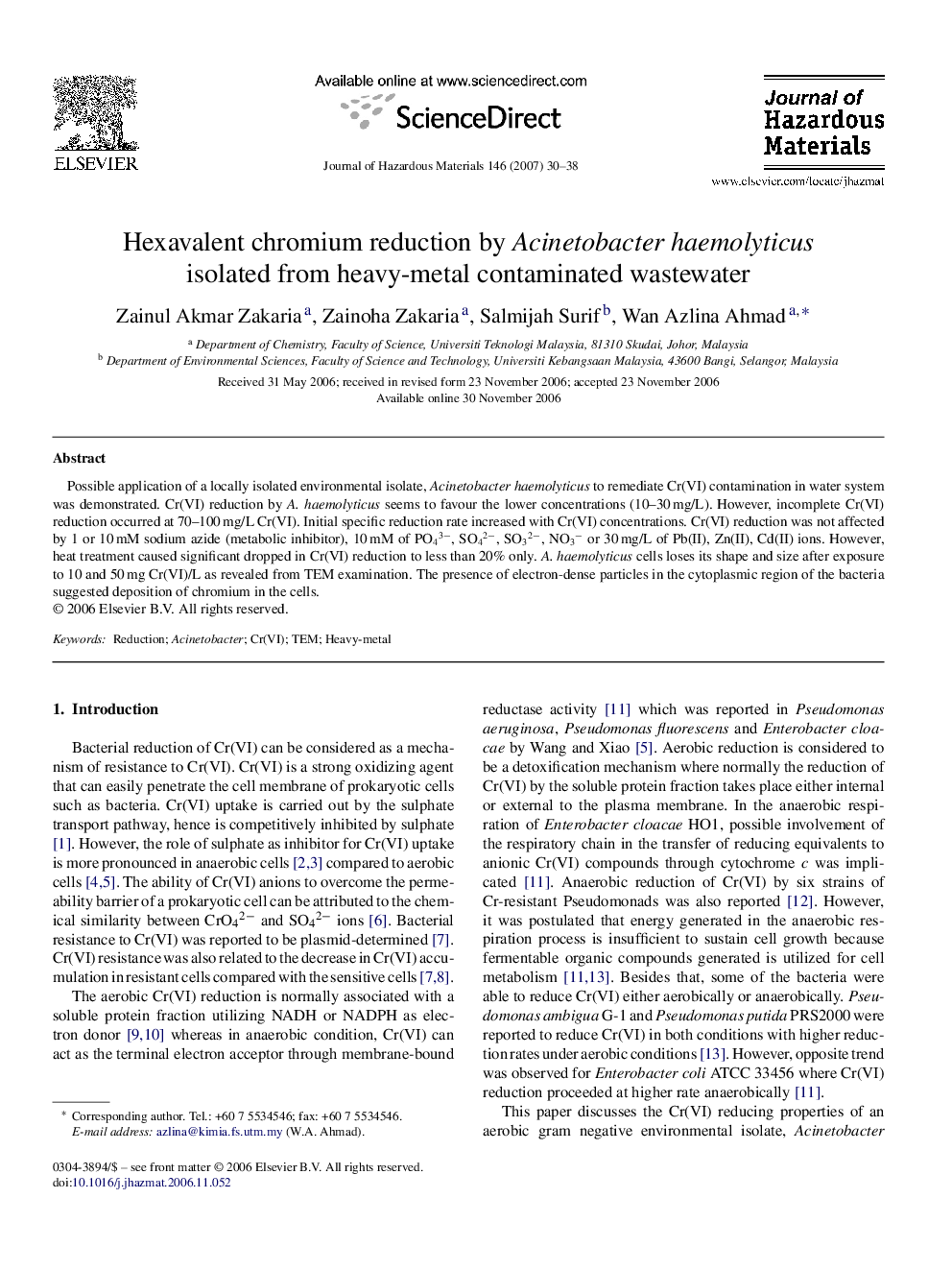| Article ID | Journal | Published Year | Pages | File Type |
|---|---|---|---|---|
| 584023 | Journal of Hazardous Materials | 2007 | 9 Pages |
Abstract
Possible application of a locally isolated environmental isolate, Acinetobacter haemolyticus to remediate Cr(VI) contamination in water system was demonstrated. Cr(VI) reduction by A. haemolyticus seems to favour the lower concentrations (10-30Â mg/L). However, incomplete Cr(VI) reduction occurred at 70-100Â mg/L Cr(VI). Initial specific reduction rate increased with Cr(VI) concentrations. Cr(VI) reduction was not affected by 1 or 10Â mM sodium azide (metabolic inhibitor), 10Â mM of PO43â, SO42â, SO32â, NO3â or 30Â mg/L of Pb(II), Zn(II), Cd(II) ions. However, heat treatment caused significant dropped in Cr(VI) reduction to less than 20% only. A. haemolyticus cells loses its shape and size after exposure to 10 and 50Â mg Cr(VI)/L as revealed from TEM examination. The presence of electron-dense particles in the cytoplasmic region of the bacteria suggested deposition of chromium in the cells.
Related Topics
Physical Sciences and Engineering
Chemical Engineering
Chemical Health and Safety
Authors
Zainul Akmar Zakaria, Zainoha Zakaria, Salmijah Surif, Wan Azlina Ahmad,
